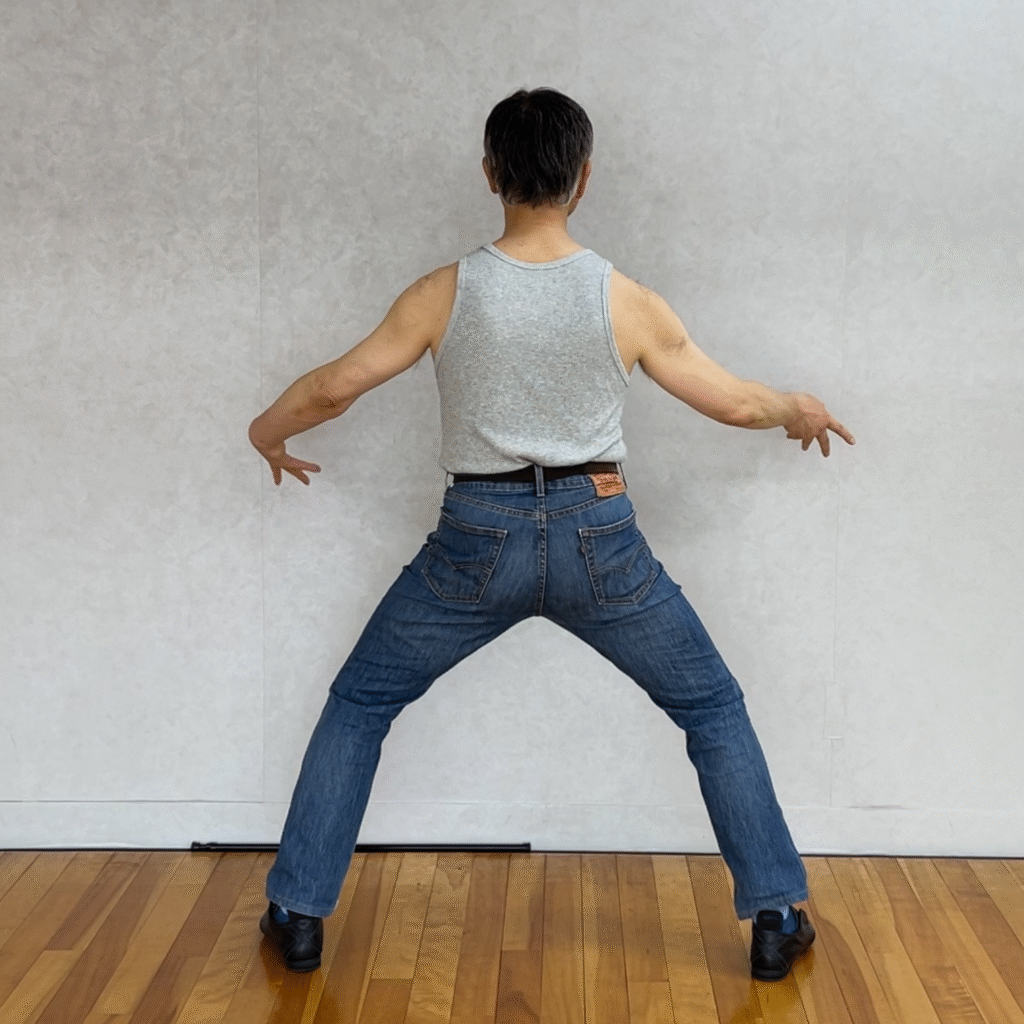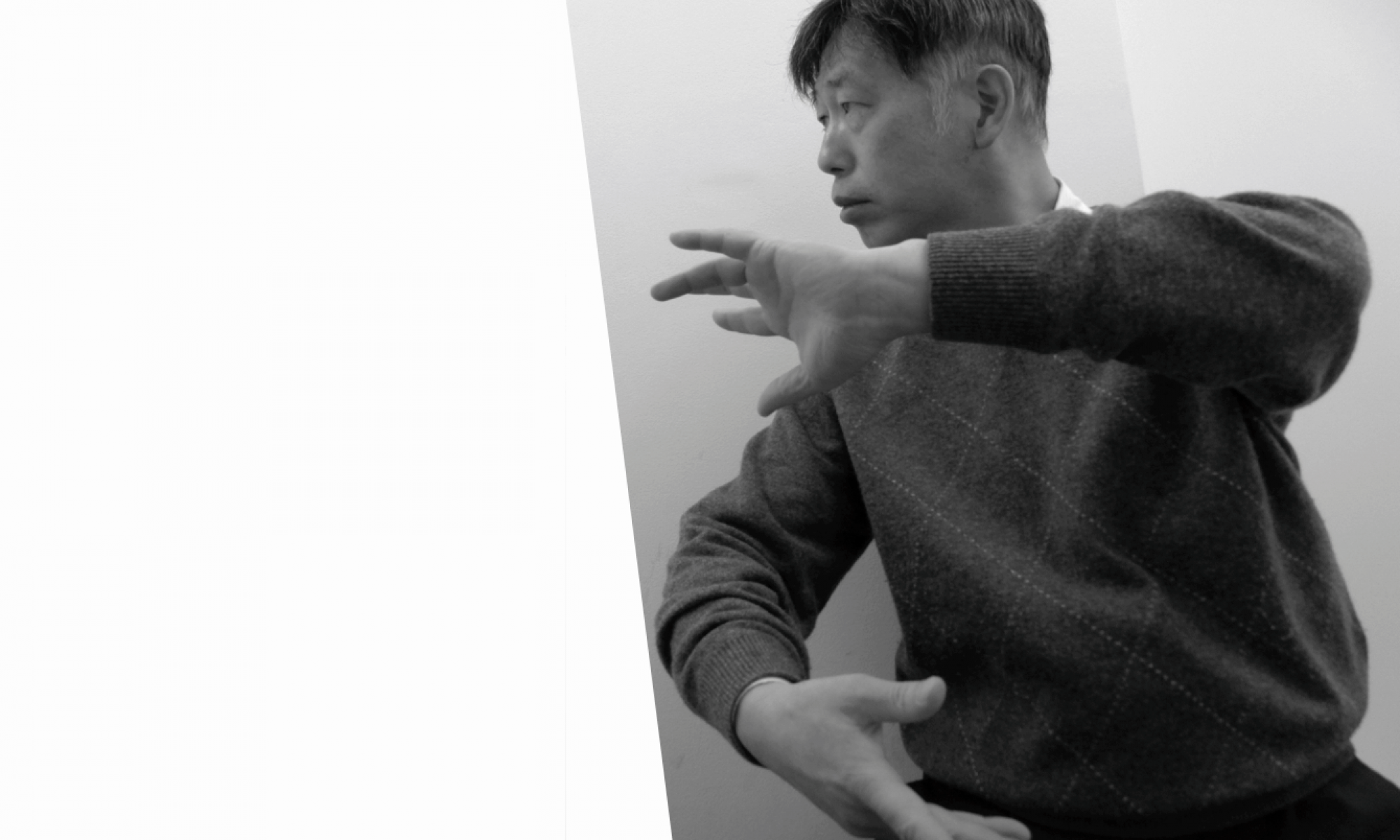
There are many books that describe the theory of Taijiquan, but most of them are quite difficult to understand because the words used are vague.
I would like to explain scientifically through my experience.
Taijiquan uses the energy of “Qi”.
I must say that “Qi” itself has no power to fall the person down.
The mind of “Yi” is important factor in Taijiquan.
However, when I say, “Use Yi, don’t use strength.” it makes no sense to the general public.
“Qi” and “Yi” concepts are in an intangible world. If you try to talk about these things, you will get struggled to explain how in proper way.
Then what should I do? Taijiquan uses “Jin”.
This “Jin” is a force that acts directly on the opponent, and can be accurately described and talked in physics.
This time I would like to talk about Taijiquan from the point of “Jin” aspect because it is the science.
If we could define “Jin”, it is the power created by using the whole entire body, and is in the state of a whole entire body is connected.
In Chinese martial arts, there is no idea to partially train muscles.
It would be weird if a lion or bear fixed some joints and started muscle training.
It’s the same. “Jin” is created by the whole body and is not a force that can be achieved by partially training the muscles.
So, what does it mean to be connected to the whole body?
Imagine a chain.
No matter which end you shake, the force is transferred to the other end.
The flow of “Jin” is bidirectional.
It is easy to understand by drawing the body structure using this chain image as an example.
Four chains extend from the center of gravity of the body called “Dantian” to the ends of the extremities.
When receiving the action of the opponent, the kinetic chain starts from the fingertips and excites Dantian.
In addition, the reverse is the case when making an attack action, and Dantian becomes the starting point of the force, and one of the extremities will be an acting point on the opponent.
There is a word called “The three joints” in the teaching of Taijiquan.
In physics, it is the power point, the fulcrum, and the point of action.
“Jin” is transmitted in this order of power point, fulcrum, and action point.
If you are attacked by your opponent, first sense your opponent’s movements with your finger.
The finger movement is transmitted to the elbow with the wrist as a fulcrum and acts.
This time, the movement of the wrist acts on the shoulder with the elbow as the fulcrum.
In other words, a kinetic chain is created while the fulcrum moves.
The theory of kinetic chain has been handed down to Taijiquan as “The three joints” principle as well as Xingyiquan.
However, Taijiquan’s “Jin” is a little different. That’s because the Taijiquan “Jin” is a “Silk Reeling Force”.
In other words, the power of Taijiquan draws a spiral. So what is it?
Taijiquan first senses the sign that the opponent is starting to move with the middle finger, and acts on the pisiform bone so called “Small celestial star”.
This time, the fulcrum is reflected on the small celestial star and the elbow begins to move. Next, the fulcrum appears on the elbow and the shoulder begins to move.
The movement of this spiral is transmitted to the spine and excites Dantian through the centerline of the trunk.
The opposite is true when making a “Jin”. First, activate Dantian.
This is the starting point of power. The movement of Dantian acts on the entire pelvis with the sacrum as the fulcrum.
The slight movement of Dantian is called “Internal Force” because it cannot be seen from the outside.
The movement of the waist caused by the “Internal force” is accelerated by the spine and transmitted to the shoulders and arms.
The spine and shoulders are not directly connected by joints.
In order to convey the movements of the spine to the shoulder, take a posture called “Sink Chest Raise Back”.
The movement power of the spine is transmitted to the shoulder by opening the scapula to the left and right with the sternum as the fulcrum.
If you do not understand this principle of dynamics, you cannot teach “Jin” to students.
Also, martial arts utilize the power of the earth.
The toes are the power points, and move the hip joints with the knees as the fulcrum.
This is the lower body kinetic chain.
It is important to grasp the ground with the thumb and having a consciousness to feel that the waist is standing straight with this force.
Accelerate the force of the earth using the movements of the knees to move the waist, further accelerating it with the spine to explode this force in the opponent’s body inside.
This is the flow of “Jin”. This is the “Jin” power.
At the beginning, I explained that it is unnatural to partially strengthen the muscle power with fixing some joints. Taijiquan has no reason to compete with each other to verify punch power and kick power.
Even a woman having weak muscles can beat an opponent.
That is “Jin” power and skills of martial arts.
I don’t want that I will mislead you. Actually, I would say that it is not easy to get a “Jin” power.
Because it is a force that you can get only by the harmony of the movements of the whole entire body.
It is necessary to meet a right Taijiquan master able to teach you, receive right exercise instructions for a certain period of time, correct the movements continuously, and do more sweat for training.
The teaching of “The three joints” reminds us that in the transmission of force, the middle joint should not be the starting point of force.
In other words, the origin of the force is the ends of the chain, and in the body structure, Dantian, the fingers of the hand, and the toes of the foot.
If your wrist, elbow, or shoulder moves first, it’s a muscle force, not a “Jin” force.
As I said at the beginning, “Use Yi, don’t use strength” is that the meaning.
Because the tip of the middle finger, the tip of the big toe, and Dantian are moved by “Yi”.
I also said, “Qi” itself has no power to fall the person down.
That means that “Qi” is like potential energy, and it acts on a person only after it is converted into a force called “Jin”.
Defeating a person with “Qi” is an indirect expression and cannot be a scientific explanation.
It means that if you don’t practice “Jin” even if you practice “Qi”, it will not be martial arts.
The practice of Taijiquan is to acquire the internal force and to develop a kinetic chain by Silk reeling force.
There is no end to the pursuit of “Jin”.
It seems that most people are frustrated without knowing the “Jin.”
Let’s practice to aim for the highest stage of “Jin”.
